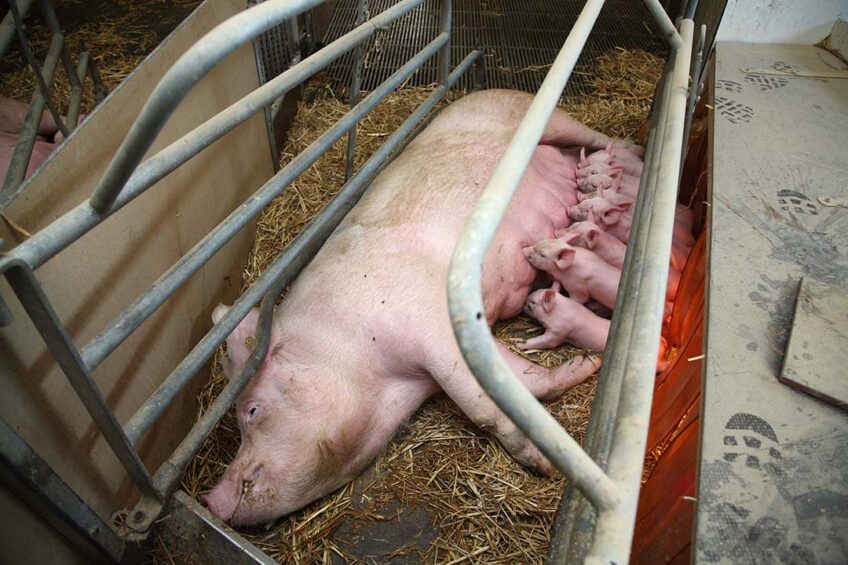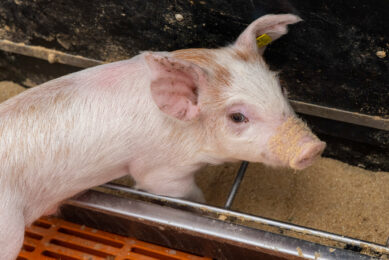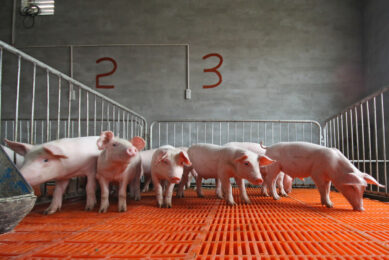How does bump feeding improve piglet growth and sow reproductive performance?

Researchers from South Korea and the Philippines recently investigated whether bump feeding during late gestation impacted sow reproductive performance, and piglet growth.
Intensive genetic improvement has increased litter sizes and decreased birth weight within each litter. Low-birthweight piglets have lower weaning and market weight, decreased reproductive performance, and a higher mortality risk. There are various nutritional strategies to improve piglet birth weight and optimise reproductive performance in sows. Bump feeding is one of them. This means increasing the sow’s daily feed intake by about 1 kg from day 90 of gestation to farrowing to provide the extra energy and amino acids needed in late gestation.
2 dietary treatments
The researchers used 28 sows (Landrace × Yorkshire). They housed them in individual gestation crates with autoloading feeding systems and ad libitum access to water. Each treatment group consisted of 14 sows that were submitted to flush feeding about 20 days before artificial insemination.
On day 84 of gestation, the team gave sows 2 dietary treatments. They fed all sows individually 5 times a day with their corresponding feeding amount. The control group got 2.50 kg a day until farrowing, while the team increased the treatment group’s feed allowance to 3.50 kg daily from 84 days of pregnancy to farrowing. On day 107 of gestation, the team weighed all sows individually, moved them into the farrowing house, and kept them in an individual farrowing crate.
Recording feed intake
After farrowing, the researchers fed all sows with a commercial diet. They sows received the same amount of feed during the lactation period until day 28, and their feed intake was recorded. The team recorded piglet birth weight, the total number of piglets born, piglets born alive, and those stillborn. They weighed te piglets were individually again at 3 days old to determine the sow’s milk yield. They also calculated pre-weaning mortality. The sows were weighed individually after 28 days of lactation phase. Backfat thickness was measured ultrasonically, and the body condition score (BCS) was determined. The researchers also filmed farrowing behaviour and postural changes.
Impact on backfat thickness
The physiological conditions of the sows during the gestation period were within the optimal range. Sows with higher feeding allowance during the late gestation period showed an increase in backfat thickness and BCS. Sows with lower feeding allowance had a higher backfat loss at weaning.
Impact on reproductive performance and behaviour
Sows with higher feeding allowance showed less body weight loss during the weaning period. They also tended to have shorter weaning-to-oestrus intervals. In addition, sows fed with 3.50 kg per day displayed higher values for the total number of piglets born, live birth, livability at farrowing and weaning, and litter size weaned. They also showed lower values for the total number of mummified piglets, stillbirth, and mortality, and re-oestrus days. In addition, duration and frequency of standing in sows with higher feeding allowance after farrowing was lower compared to the sows fed with 2.50 kg per day.
Impact on piglet growth performance
The birth weight, body weight gain after 3 days, and weaning weight were greater in the offspring of sows with higher feed allowance during the late gestation period due to increased milk yield in sows. This finding suggests that feeding a high volume diet during late gestation helps the sow build up energy reserves, which can be utilised for milk synthesis during lactation. In addition, bump feeding during gestation leads to an elevated ratio of secondary to primary muscle fibers in piglets. This enhances growth rate and improves feed efficiency during the later stages of pig growth.
Conclusion
The authors concluded that increasing feeding allowance during the late gestation period improves piglet growth performance, sow production and reproduction performance.











